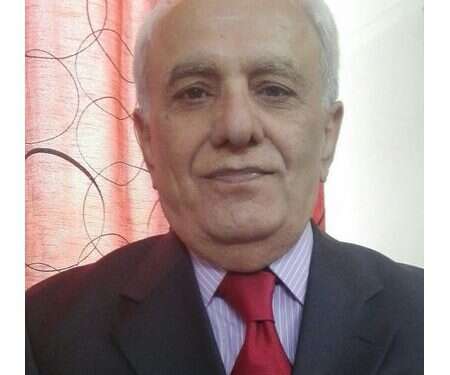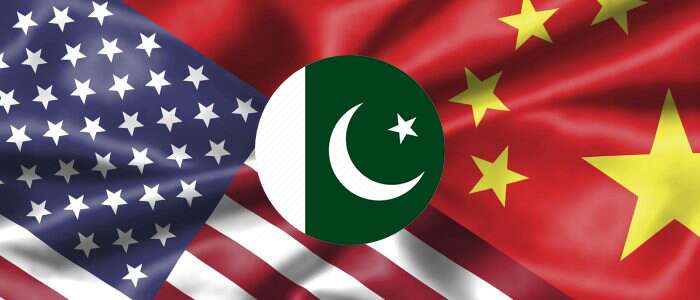
M. Alam Brohi. Born 1952.
Was a member of the Foreign Service of Pakistan for over 30 years. Retired after serving as Ambassador for 7 years.
Pakistan, wittingly or unwittingly, is caught in the crosshair of the rivalry between the two great powers of the world which would test the diplomatic skills of our Foreign and security policy mandarins. Diplomacy without military prowess and economic strength does not yield desired results. Economic stability is the foremost prerequisite for a country’s success in carving out a safe and secure strategic place for itself at the global level. Within the intensifying Sino-American competition, we need to review the prototype of our bilateral relations with both the competing powers, revisiting the challenges and opportunities we had in the past, and what the coming years hold in store for us.
Pakistan’s relations with the USA had always been transactional, subject to ebb and flow, and mostly driven by American interests and priorities. The bitter fact is that the US never treated Pakistan at par with India even when the latter was in the Soviet Union’s tight embrace. We had many disappointments. Notwithstanding the past setbacks, we could never resist any inducement to return to the US stables when occasioned by a cataclysmic event. Today, India has been elevated to a higher pedestal as a trusted ally to countervail China. Much water has passed under the bridge. Pakistan will have no privileged relationship as in the past with the US in the evolving global power politics. The world has long passed the Cold war era.
Conversely, the dependability of China’s friendship with Pakistan despite our weaknesses or aberrations in policy and practice needs no elaboration. Much before its withdrawal from Afghanistan, the US lowered Pakistan in its foreign policy priorities leaving it with the only option of moving closer to China with which we have already had a multi-faceted relationship including an advantageous partnership in the CPEC and understanding of the peace process in Afghanistan. In the meanwhile, Pakistan too partially succeeded to mend its relations with Russia. However, all this did not deter Pakistan to engage the US for recalibrating relations between the two countries on the basis of mutual respect seeking trade and investment, and convergence on the issues of international concern without any compromise on its rounded relationship with China. This engagement continues unabated.
Nevertheless, we should be well prepared for the American pressure which will be brought to bear on our foreign policy options when the rivalry between the two powers intensifies in the coming decades. The Americans would very much like to undermine our old and trusted friendship with China by targeting BRI in general and the CPEC in particular. India is hell-bent to fail CPEC. President Donald Trump’s senior officials supported India’s stance on CPEC. Stepping up its pressure, the US can possibly squeeze Pakistan through international financial institutions and FATF. This would pose a formidable challenge. Our chronic dependence on the IMF, World Bank, and Asian Development Bank for loans and economic aid could be our Achilles’ heel.
We have withstood American pressures in the past. But those pressures had a different background and intensity. The Chinese leaders understand our vulnerability to external pressures on many counts. Pakistan, today, has a much deeper political, economic, and strategic relationship with China which is a thorn in the body of India and the US-led West. For economic connectivity with South West and Central Asia, Pakistan and China have evolved a mutually supportive policy on peace and stability in these regions. Peace and stability in Afghanistan are the keys to the economic integration of these regions and the Middle East.
The foreign policy of a country cannot be divested from its internal situation. Our vulnerabilities to external as well as internal pressures are monumental. Pakistan is a medium country with strong military and nuclear assets but a chronically weak and unstable economy. It is overburdened with foreign loans. The federation is not homogenous and suffers from political, economic, ideological, and cultural fault lines with small provinces chronically resenting the injustice meted out to them in the distribution of state resources. The elite has completely captured state resources. Corrupt oligarchies have taken hold of the country ruling it according to their whims. Corruption is endemic. Almost 60% of our population is deprived of their constitutional right to education, healthcare, livelihood, security of life, and honor.
The population of the hewers of wood and drawers of water in the society is on the rise. The economic structural and stabilizing reforms have been long overdue and cannot be further delayed. We have to reset our economic priorities rationalizing our revenues and expenditures and reducing dependence on foreign loans and financial aid. The IMF has been chronically too entrenched in our economic and financial affairs controlling our budgets, prices of the utilities, tariffs, taxes, salaries, and pensions. This is too much for a self-respecting nation.
The chronic tug of war between the main institutions of the country for more power and space has critically undermined constitutional democracy and governance. We have to address this anomaly forthwith along with other pressing political, federal and ideological fault lines and economic woes to rise as a nation to be reckoned with. Our immediate concerns should be the insurgency in Balochistan; the increasing militancy of religious outfits, parochialism, and the ethnic divide in Sindh. These problems look daunting but are not insurmountable.
The CPEC is termed as the linchpin of BRI – a game-changer and harbinger of prosperity in South Asia and beyond. Simultaneously, it is viewed as a fissiparous project heightening domestic rivalries for a bigger piece of the cake, and generating regional and international controversies over the passages of the corridor through territories disputed by certain states. It is also increasingly looked at as an extension of the new economic Great Game being played out in the neighboring Central Asian region between the world powers and the regional countries including the USA, China, Russia, Pakistan, India, Iran, and Turkey. All these views about the CPEC have some merit and need to be examined and properly understood.

